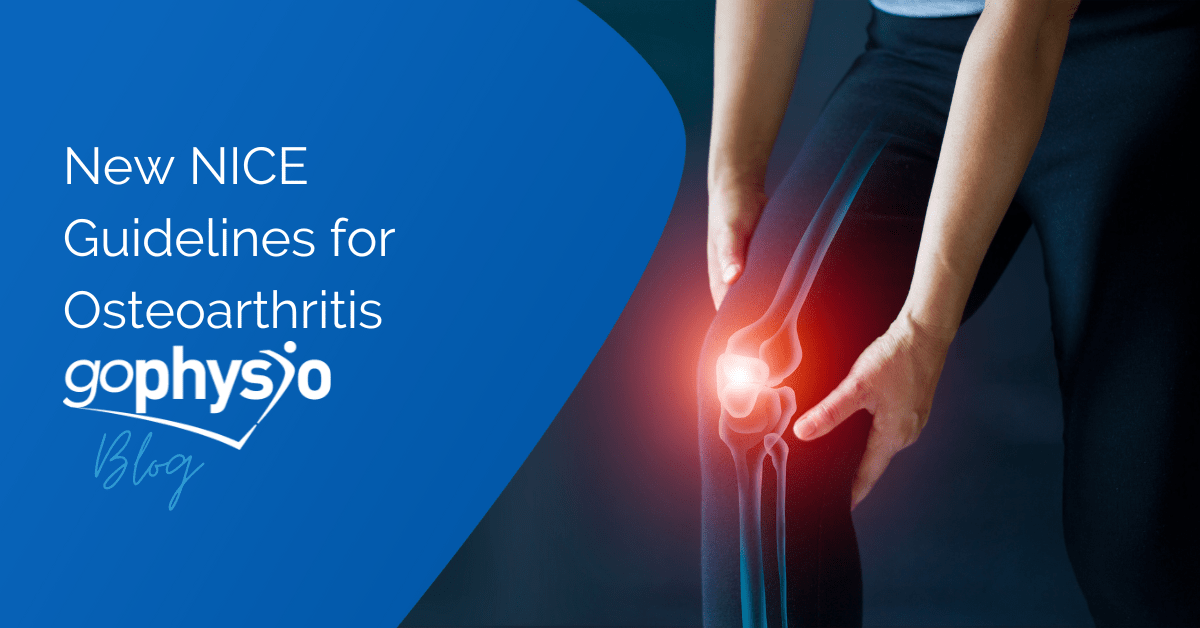
The National Institute of Clinical Excellence (NICE) has recently produced new guidance for the management of Osteoarthritis. With the condition affecting 520 million people around the world and rising cases (there has been a 48% increase globally in the number of people with OA between 2009 to 2019), it has a huge impact on peoples lives.
So, what does the latest guidance say?
Diagnosis What might surprise you is that the guidance states there is no evidence that shows imaging (so X-Rays or scans) is beneficial for diagnosing osteoarthritis. The latest guidance says that osteoarthritis can be diagnosed by taking a thorough history and doing an examination. Imaging can be useful if atypical features are present that could suggest an alternative or additional diagnosis, such as other inflammatory forms of arthritis (for example, rheumatoid arthritis). So, it’s no longer commonplace to be referred for an X-Ray to check if you have arthritis.
Management If you are diagnosed with Osteoarthritis (OA), there is clear guidance on the best management of the condition. The priorities are:
- Management should be guided by individual symptoms and physical function, so that’s things like pain, stiffness, movement and how you manage with daily activities.
- Core treatments for OA are therapeutic exercise and weight management, if this is appropriate.
- Information and support should be provided alongside, including signposting to resources and support.
Therapeutic exercise is one of these core treatments that has overwhelming benefits in managing OA. It is this guidance that we ensure we follow when we see people with OA at goPhysio. So, what does the guidance say about therapeutic exercise?
- For all people with OA, therapeutic exercise which is tailored to individual needs, should be offered. Examples of therapeutic exercise may include local muscle strengthening and general aerobic fitness. Exercise should be included that are specific to the joint affected.
- Supervised therapeutic exercise sessions for people with osteoarthritis should be considered and have been found to be more beneficial than unsupervised exercise.
- People with osteoarthritis should be advised that joint pain may increase when they start therapeutic exercise.
- Doing regular and consistent exercise, even though this may initially cause pain or discomfort, will be beneficial for their joints.
- Long-term adherence to an exercise plan increases its benefits by reducing pain and increasing functioning and quality of life.
- Consider combining therapeutic exercise with an education programme or behaviour change approaches in a structured treatment package.
As part of the management of OA, a package of treatment is most beneficial. A treatment package is defined as any treatment for osteoarthritis (this could include: exercise, manual therapy, devices and pharmacological treatments) combined with one of the following:
- Behaviour change approaches, including ways to reduce pain and straining when using joints, pain coping skills training (including spouse-assisted coping skills training), goal setting; motivational coaching; weight management counselling and workplace risk counselling
- An education programme given by 1 or more healthcare professionals over multiple sessions, including those based on behavioural theory.
Any treatment package should be centred around the individual, so that it considers an individuals abilities, lifestyle and beliefs.

Read More



